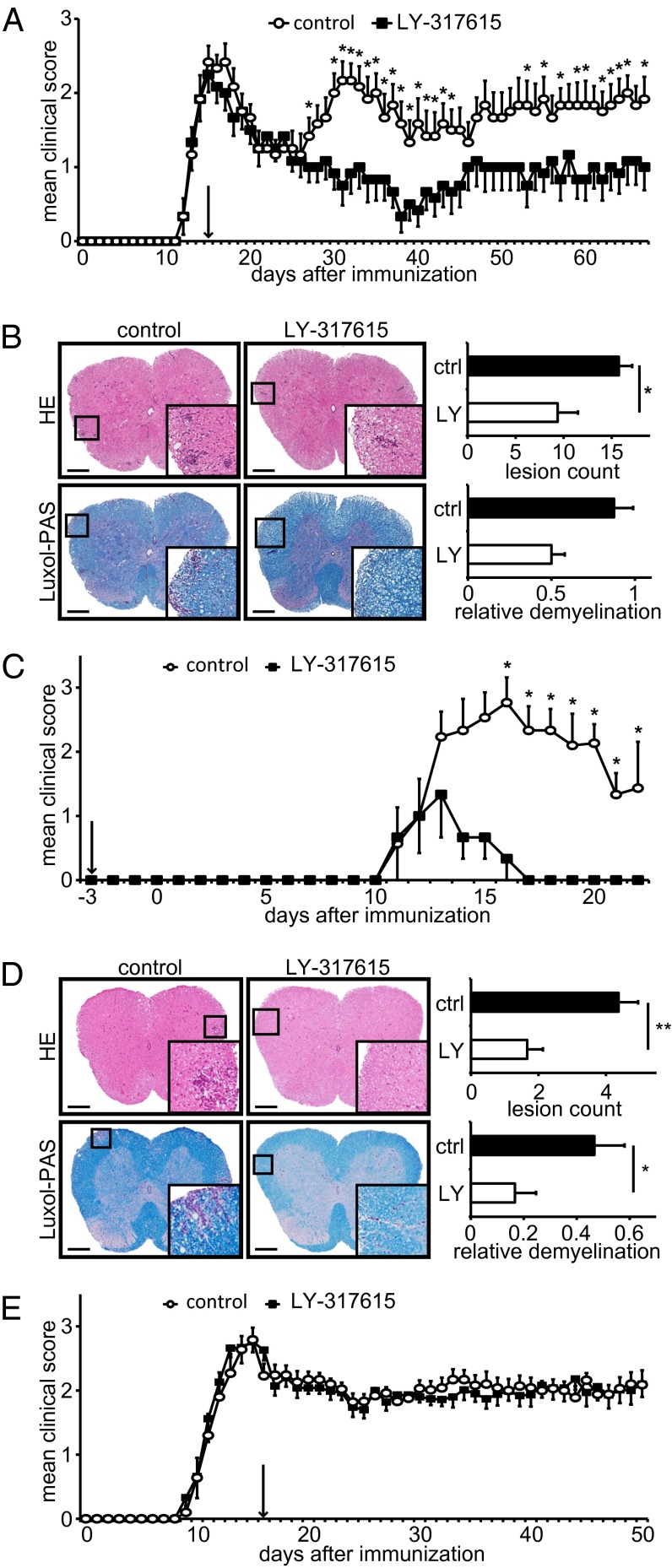Fig. 1.
LY-317615 treatment is effective in PLP139–151-induced EAE. (A) Daily disease scores of SJL mice immunized with PLP139–151. Daily oral application of LY-317615 was initiated at the peak of disease (arrow). One representative experiment is shown out of four independent experiments with 10 mice per group, respectively. *P < 0.05 according to Mann–Whitney U test. (B) H&E-stained (Upper) and Luxol-PAS–stained (Lower) slides of spinal cords from diseased SJL mice and their statistical evaluation. Representative slides are shown, and statistics were obtained from at least five mice per group. *P < 0.05 according to Student t test. (Scale bars: 200 µm.) (C) Daily disease scores of EAE in SJL mice, induced by adoptively transferred LN cells from immunized mice after 72 h of restimulation in vitro. Recipient mice were treated daily with LY-317615, starting 3 d before cell transfer (arrow). One representative experiment is shown out of three independent experiments with five mice per group, respectively. *P < 0.05 according to Mann–Whitney U test. (D) H&E-stained (Upper) and Luxol-PAS–stained (Lower) slides of spinal cords from diseased animals and their statistical evaluation. Representative slides are shown, and statistics were obtained from at least five mice per group. *P < 0.05 according to Student t test. (Scale bars: 200 µm.) (E) Daily disease scores of EAE in C57BL/6 mice, immunized with MOG35–55 and injected twice with 200 ng per mouse pertussis toxin. LY-317615 treatment started at the peak of disease (arrow). One representative experiment is shown out of two independent experiments with 10 mice per group, respectively. *P < 0.05 according to Mann–Whitney U test.

